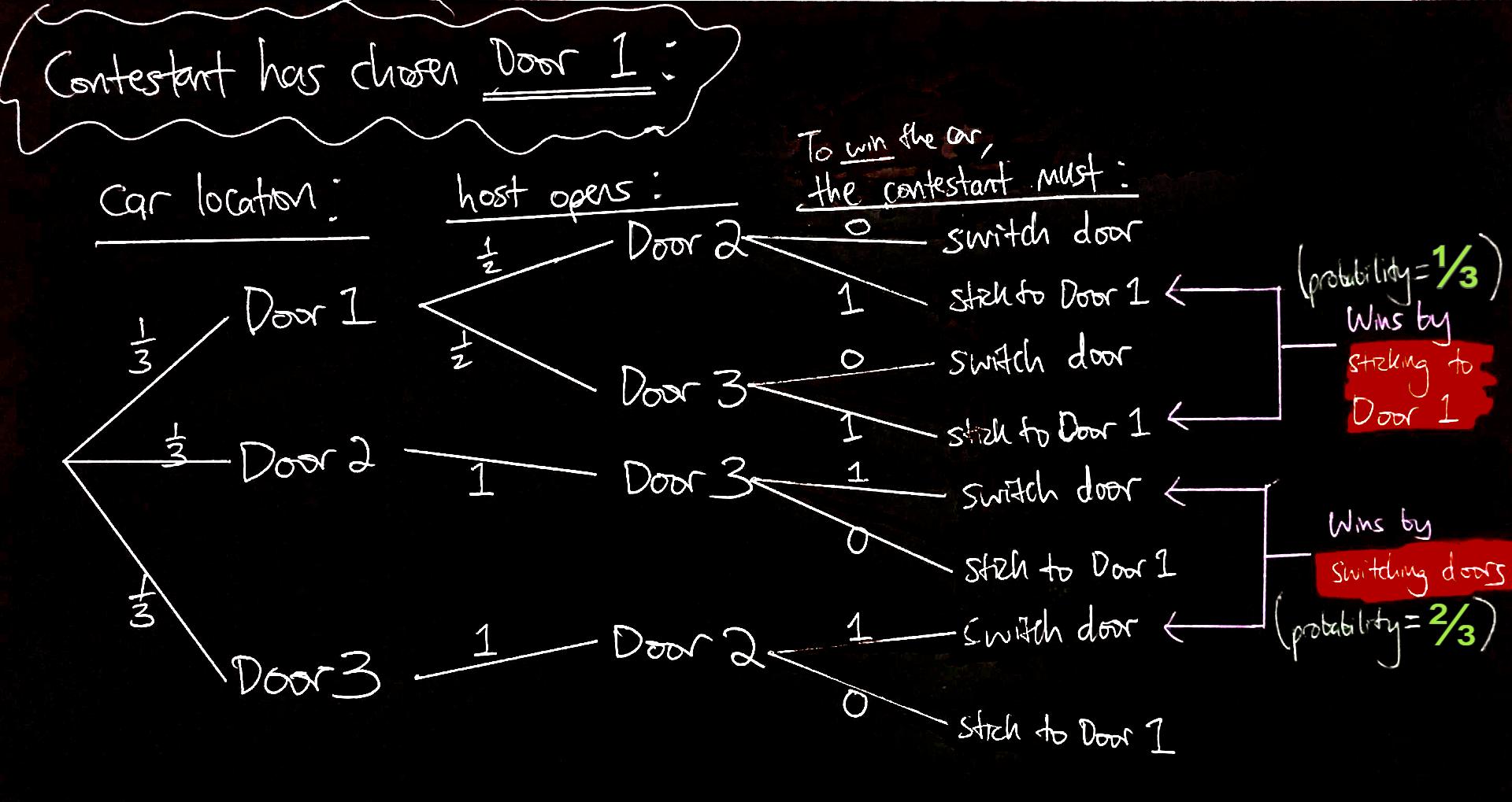I usually explain this by simulating, and then defusing, the mis-understanding using a simple table. You can set up any of the three cases of the problem, as they are obviously all the same, I'll use [1:Goat] [2:Goat] [3:Car] here:
My choice Monty Shows Reward for Stick Reward for Switch
1 (goat) 2 (goat) 0 1
2 (goat) 1 (goat) 0 1
3 (car) 1 (goat) 1 0
3 (car) 2 (goat) 1 0
Point out to the student that that in the case where I chose 3, Monty can open either door number 1 or number 2, but in the other case, he has only one choice. However, so far all that we've done is to replicate the confusion because if you count up the stick vs switch rewards, it's 50/50 (2/2).
The student will be, like, "See!" (and this is, indeed, the confusion that even many mathematicians who wrote into MVS's original column had!)
But let's look at the probabilities of each row. Recall that the total has to be 1. In the first column, start by assigning 1/3rd to each row. But that's not right, because it adds to 4/3rds. Okay, maybe 1/4 each? But that makes no sense because where does the 4 come from; there are only 3 doors!? The only obvious remaining assignment is 1/3rd, 1/3rd, and then there's 1/3rd that the personal will choose the car -- that works out, so obviously we need to split this, so it's 1/6th for each of the last two rows.
Aha! So there's an actual traceable imbalance in the rewards! Each of the +1 for switching rewards has 1/3rd, so you get 2/3rds for switching, but the +1s for sticking together only add up to 1/3rd (1/6th each)!
There are two advantages to this approach. First, the table is obvious (more obvious to most people than a tree). Second, you start by replicating the learner's understanding, then point out the mis-understanding, and lead them, using the same representation, to understanding. I find that I generally don't have to go father than pointing out the 1/6th for the latter two rows, and they figure it out themselves.
(I want to make a comment about another common approach to explaining this, which I actually think is not a great way to do it. Specifically,, sometimes explainers will say something like: imagine that there were 100 boxes, 99 with goats, and when you choose one, Monty reveals 98 of them. There's several reasons why, although correct, isn't a great way to explain the problem. The main issue is that it doesn't map uniquely to the 3-door case; it's not clear, when Monty is revealing the 98 other goats, that he couldn't, at that point, have just revealed them of them, or one-at-a-time, which is an equally natural analog to the 3-door case, and is very confusing because you'd have to mentally run the simulation backwards to the 3-door case before being able to answer! That is, although the explanation is correct, it's not obvious that the correct analog of the 3-door case is to reveal 98, as opposed to 1, wrong doors.)


